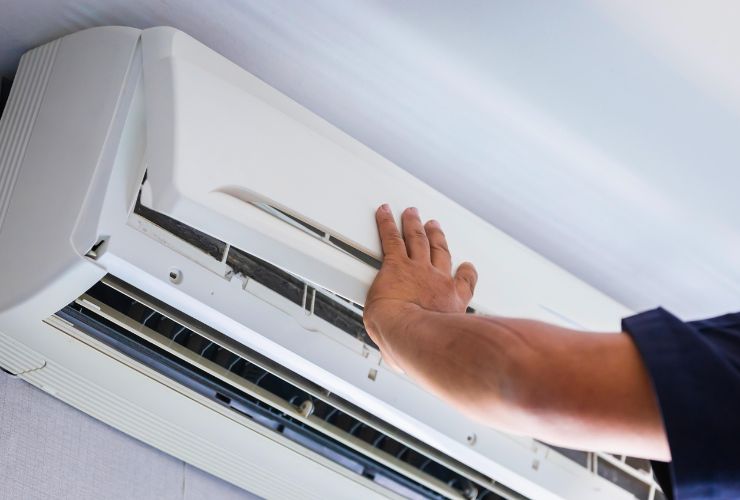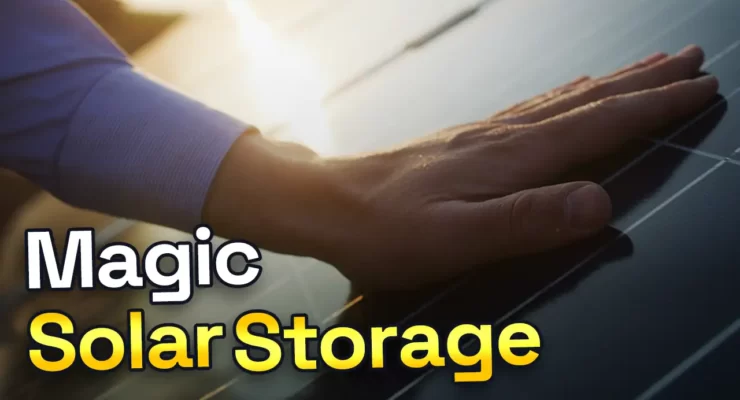Fast read
Solar energy can be stored without batteries through various methods. Heating water electrically allows efficient energy storage, and underfloor heating uses electricity to store energy as heat in a home's structure.
Air conditioners can maintain temperatures during the day using solar power, reducing evening energy needs. Load shifting involves using appliances during the day, and harnessing solar energy directly. On a larger scale, utilities can store solar energy using pumped hydroelectric storage, compressed air storage, flywheels, thermal energy storage, and green hydrogen.
These electrical systems vary in efficiency, cost, and infrastructure needs. For anyone considering solar or related technologies, it's advised to consult with a qualified local supplier for personalized recommendations.
Can I store solar energy if I don’t have batteries?
As more people use solar power, some are thinking about adding batteries to store extra solar energy. Batteries can save the extra power solar panels make, making homes more independent with energy. But batteries are pricey and not an option for many. So, it’s good to find other ways to use solar energy well.
One idea is to use solar power without batteries. For example, you can do energy-heavy tasks like laundry or charging devices when the sun is strongest. This way, you use the power your panels make right away instead of storing it.
You can also use smart systems to control how much energy you use. They can adjust things like lights or appliances based on how much solar power is available. Plus, using energy-efficient stuff like appliances or lights helps you use less power overall.
Some electric companies offer special rates depending on the time of day. By doing energy-heavy tasks when rates are lower, you can save money and use more solar power. And if you have solar panels connected to the electricity grid, you can sell extra power back to the electric company for credits.
By using these simple tricks, you can make the most of your solar power without needing expensive batteries. It saves money and helps you rely more on clean energy.
Hot Water
Storing energy as heat is a smart and easy way to make the most of your solar power. If you have an electric water heater at home, you can use your solar panels to heat water during the day and keep it warm in a well-insulated tank. This means you’ll have hot water ready whenever you need it, without using extra electricity.
Another way to store solar energy is by home heating or cooling. For example, if you have underfloor heating, you can use your solar electricity to warm up the floors. The heat gets trapped in the floor and walls, keeping your home cosy for a long time. By using your solar power for heating, you can save energy and money while staying comfortable.
These simple tricks help you get the most out of your solar energy system, reducing your reliance on traditional energy sources and saving you money in the long run.
Climate control to store solar energy
Using your air conditioner during the day to heat or cool your home can be a clever way to store solar energy. When you maintain a comfortable temperature during daylight hours with solar energy, your house doesn’t need as much energy to cool or heat it in the evening. This is because the house retains its temperature better when it’s already been regulated throughout the day.
So, by using your air conditioner strategically with solar power during the day, you can save energy that would otherwise be used later. This not only helps you reduce your energy bills but also contributes to a more sustainable and efficient use of electricity.

Load shifting
Load shifting is a smart strategy for managing your electricity usage, especially when you have solar power. By adjusting the timing of when you use appliances, you can make the most of your solar-generated electricity. To optimise load shifting, consider running appliances like pool pumps, washing machines, clothes dryers, and dishwashers, and charging batteries during the day instead of in the evening or at night.
By scheduling these activities for daylight hours, you can use electricity directly from your solar system rather than relying on the grid. This not only helps you save money on electricity bills but also reduces your reliance on non-renewable energy sources.
Load shifting is an effective way to maximise the benefits of your solar panels and increase your energy independence. Plus, it’s a simple and practical way to contribute to a more sustainable energy future for your home.
Utilities to store solar energy
From a utility perspective, there are effective ways to store solar energy to be used later, including;
- Pumped hydroelectricity storage – This storage strategy involves using excess solar to pump water from a lower reservoir to a high reservoir. When you require energy, the water is released through turbines to generate electricity. Pumped hydroelectric storage requires suitable geographical conditions and is expensive; however, it offers a long life cycle and high efficiency.
- Compressed air storage – When using this type of storage, the excess solar is used to compress and store air. Then, when energy is needed, the compressed air is released to generate electricity.
- Flywheels – Using excess solar electricity to turn a large, weighted wheel that will continue to spin for an extended period. The energy can then be used from this spinning flywheel to create electricity when required.
- Thermal energy storage – Like heating hot water above for the home, excess electricity can be used to store energy as heat within various materials from molten salts to liquids. These can then be converted to electricity via turbines or used in commercial heating processes. Thermal energy storage usually requires specific infrastructure but is extremely efficient.
- Green hydrogen – Excess solar and renewable energy can be run through an electrolyser to split water into hydrogen and oxygen. The hydrogen can then be stored and used to power a turbine. This creates electricity when required, with the by-product creating a water vapour.



